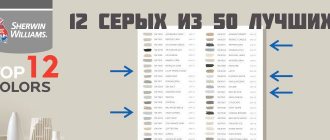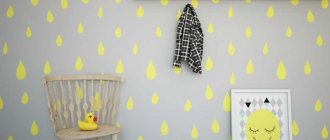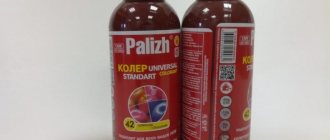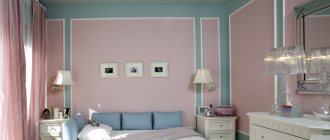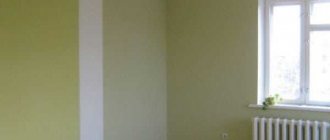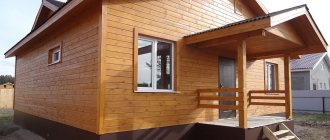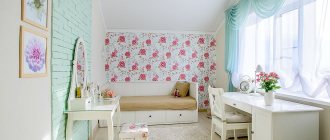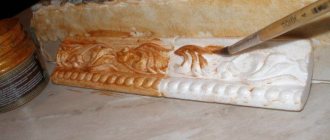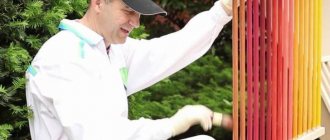Paint is the simplest finishing material. It is used everywhere and has been invented since time immemorial. Since that time, a large number of paints on different bases have appeared on sale. Thanks to paint, walls and furniture can take on any shade, and it can be changed at any time.
Some of them are considered harmless, others can have a negative effect on the body. And if the requirements for the material for ordinary rooms are not so strict, then the paint for a children's room is chosen with special care. No one wants their child to breathe fumes that are harmful to him. That's why it's worth figuring out what paint to paint your children's room with.
Fortunately, nowadays there are several product options that are suitable for painting in children's rooms. They are safe and dry quickly. We will consider the requirements for such compositions, find out the types of safe paints, as well as their advantages and disadvantages.
Requirements for paint and varnish material
Children have weaker immune systems and bodies. The influence of the external environment on them is much stronger. That is why the requirements for finishing materials in children's rooms are much higher. Wall paint in a children's room must meet certain requirements. Here's what you need to know before purchasing:
- Safety and environmental friendliness. The main criterion to pay attention to. The composition should not contain any harmful substances. After drying, it should not emit aggressive fumes. This non-toxic paint for children's furniture and walls is commercially available.
- Fast drying. The faster it dries, the better. There are paints that take a very long time to dry, giving off an unpleasant odor.
- Without smell. Ideal paint option. During and after work, it should not cause a feeling of discomfort.
- Since children often paw at walls with their hands and draw on them, it is better to choose washable paint. It should be moisture resistant and not afraid of spilled water or drinks.
- Magnetic paint for children's rooms is on sale. Children really like it, as small metal objects and magnets can be glued to the surface.
By choosing a composition that meets all these requirements, you will protect children and make their stay in the room comfortable and safe. Let us note several types of safe paints for children's furniture and rooms:
- acrylic based;
- latex compounds;
- water-dispersed.
Each of the colors is good in something of its own. Let's look at the features of each type of paint and varnish material.
Useful and beautiful
Any environmentally friendly interior paint is suitable for decorating walls and ceilings in a child’s room. To make the choice easier, many manufacturers began to produce specialized formulations, the name of which indicates the area of application. In addition, there are unique materials on sale that are suitable for children’s walls. For example, lime paint Ales Shikkui (Kansai Paint), which maintains indoor air quality. Its action is based on the properties of slaked lime - but lime compositions are complex and labor-intensive to work with, while Ales Shikkui is applied like regular paint and retains all the beneficial alkaline properties: neutralizes bacteria and viruses, removes odors, reduces the level of formaldehyde and other harmful impurities in the air.
The specialized paint Ultra Resist Duluh for children (Akzo Nobel) contains silver ions, which prevent the growth of bacteria on the surface. And thanks to the wax, the coating acquires a lotus effect and does not allow water and dirt to be deeply absorbed. The paint layer can withstand the effects of even such aggressive liquids as Coca-Cola, fruit juice, soy sauce, wine, as well as chocolate oil, etc. To return the walls to cleanliness, just wipe them with a damp cloth, and remove more severe dirt with a cloth with detergent means.
Enamel Aqua Buntlack (Alpina) (0.75 l - 990 rub.)
Thanks to the water-borne matte varnish Taika Glow (Tikkurila), painted walls will glow in the dark. With its help, you can “scatter” magic stars on the ceiling of the nursery or place magical luminous signs. The child’s movement along corridors and stairs marked in this way will be safer. The effect is best seen against a light background in a room without lighting. However, in order for the varnished areas to glow in the dark (up to 6 hours), they need to be “charged” under sunlight or artificial light.
Do your children love to draw? Decorate part of the wall in the room with Liitu chalkboard paint (Tikkurila). The surface will become smooth, matte, and you can draw and draw on it with colored crayons, erasing pictures and inscriptions with a damp cloth. As an example, another part of the wall can be decorated with colorful wallpaper.
The rich, cheerful colors that children love so much will be restored to old toys by water-based Aqua Buntlack (Alpina) enamel. The safety of the composition complies with the DIN EN 71-3 standard. The enamel forms a colorful coating that is resistant to saliva and sweat. And toys updated with its help will shine with new colors and will remain shiny, bright and smooth for a long time, without scratches. The main thing is not to give them to children until the paint is completely dry.
Acrylic compounds
The paint is based on polyacrylate. This is one of the varieties of water-dispersion compositions. The peculiarity is that they are diluted with water, and not with white spirit or other solvents. This means that the paint and varnish material is safe and will not harm children. During application and during operation, it does not emit toxic substances. And since the thinner is water, the paint is not afraid of moisture and can be washed. Used for painting inside and outside: walls, floors, bathrooms.
As for the material to be painted, the product is suitable for concrete, wood, and metal surfaces. Therefore, acrylic paint and varnish material can be used for children's furniture. It is easy to work with acrylic paint, it does not emit any unpleasant odors, and it is applied to the surface just fine. If we talk about color, then there are colorless white compositions on sale that can be tinted at will, as well as those already tinted in the desired shade.
Another feature of the paint is that its composition is enriched with additives. They are able to protect the surface of the walls in the children's room from fungus and mold, as they have antiseptic properties. This will protect your child from allergic reactions. And to reduce the time spent cleaning the nursery, buy paint with dirt-repellent substances.
In general, acrylic paint for a children's room has the following advantages:
- Environmentally friendly and safe for health.
- Paint for children's rooms without odor or toxic substances.
- Dries quickly.
- Resistant to mechanical loads.
- Possesses fire safety.
- Easy to apply and use.
- Resistant to moisture.
- Universal in use.
- Large assortment, different colors and structures after application.
The disadvantages of the product include high cost. But for children, the money spent is not a pity, especially when it comes to their safety and health. The representative is Pozitiv paint for children's rooms. After applying the composition, a stable film is formed that can withstand various influences.
Note! Some people use oil paints. In addition to pigments, it includes drying oil. It acts as a diluent. And if high-quality drying oil is considered harmless, today oil paints are made using drying oil and white spirit. This means that it cannot be called safe.
No damage to walls
For painted nursery walls, such a quality as resistance to washing is important. Agree, not every surface can be easily cleaned of the consequences of culinary experiments or the results of creative inspiration of future artists. An ideal option for a child’s room is a coating with high resistance to wet cleaning. But remember that walls painted with them should be protected from attacks for 2–4 weeks, until the paint layer reaches its final strength. You can lightly wipe the surface with a damp soft cloth, but intense rubbing using soap solutions should be avoided. However, within a month after painting, the walls can easily withstand the effects of neutral cleaning agents on a fabric or sponge, and heavily soiled surfaces can withstand weak alkaline detergents (pH 8–10). After using them, the coating must be rinsed with clean water.
Ultra Resist Duluh for children (Akzo Nobel) (2.5 l - 1950 rub.)
It is also worth paying attention to the impact resistance and wear resistance of the paint coating. Materials with a high degree of operational load will withstand active children's games, including with a ball, as well as scratching with plastic toys without consequences. It is gratifying that the choice of high-quality paints and varnishes on the Russian market is huge. They are offered by international corporations and small companies, among the most popular: Akzo Nobel (Dulux brand), Belinka, Farrow & Boll, Kansai Paint (Plascon brand), Little Greene, Paritet Decor, Oikos, Tikkurila, Empils.
Latex paint and varnish materials
These odorless formulations are very common. Getting paint is not difficult. Let's start with the fact that latex is a natural material that is obtained from the sap of rubber plants. Latex paints, like acrylic paints, consist of a binder, coloring pigments, fillers, solvent and additives. This is a water-dispersion-based enamel, so it is harmless and has similar properties to those of acrylic compositions. The material is ideal for painting walls inside the house and especially in children's rooms.
Advice! You need to know: when buying latex products, pay attention to the area of use. It can be for walls or ceilings. Why know this? There is more mechanical load on the walls, so it has better characteristics.
Unlike its water-dispersed counterparts, whose coating quality is somewhat worse, the presence of natural latex makes the material more resistant to moisture, mechanical damage and abrasion. The composition is easy to wash. True, after such frequent manipulations, the surface quickly becomes unusable.
Let us note two types of latex compounds:
- Semi-gloss. It cannot be called universal. In some cases, paint hides defects, and sometimes highlights them. The surface to be painted must be thoroughly prepared before application. What is important is the evenness and absence of protrusions and tubercles of the putty. The material is high quality, so after application you will see the shade of color you have chosen.
- Matte. Can be used for any type of base. It's more versatile. Its reliability is the same as that of the previous version. The only peculiarity is the pleasant matte texture. The material can be repainted several times.
Advantages:
- Easy to apply to the surface in a variety of ways.
- The finished coating is durable and reliable.
- 100% environmentally friendly.
- Sold in white and can be tinted.
- The consumption is quite economical; to treat 1 m2 of surface you need from 0.1 to 0.5 liters of the composition. Consumption depends on the surface.
- Reasonable price.
- The paint is vapor-permeable, which means that the children's room will have the right microclimate, without condensation.
The disadvantages are that the surface must be carefully prepared before painting. Although, this applies to most compositions. But fear of temperature changes is a problem. Draft leads to cracks on the surface. True, drafts in a nursery are already unacceptable, as they harm children. Otherwise, this is a great option for use in a children's room.
Drawing along lines
Drawing along the lines is one of the simple ways to enliven a nursery room. Moreover, the lower parts of the walls, which get dirty more often, can be painted in a darker color, and the upper parts in a light color. First, matte interior paint Joker (Tikkurila) is applied to the walls and allowed to dry. Then mark the distance from the floor (a) and draw horizontal lines to mark future stripes (b). Masking tape is glued along the borders of the two stripes (c). Paint them with a brush or roller and remove the tape before the paint dries (d). A day later, the operations are repeated on the other two strips (d). After that, mark the outline of the decorative “cloud” (e) and apply Liitu paint for school boards (Tikkurila) tinted white (g)
A composition of accent or bright contrasting colored stripes creates a festive atmosphere in the nursery.
Water-dispersed products
These are the safest compositions for which water is the solvent. The paint is non-flammable and does not include coloring pigments, fillers, film formers, or special additives. A prominent representative is water-based paint for children's rooms. What is the difference between them? The aqueous dispersion is mainly white and is tinted in different shades. And water-based paint already has a certain color.
If you choose the best paint for a children's room, then these are definitely water-based formulations. They have the following advantages:
- Environmentally friendly and safe due to the use of organic solvents.
- No specific smell.
- Dries quickly after application (1 or 2 hours).
- Easy to use.
- They are fire resistant.
- Vapor permeable.
- They have excellent adhesion to different surfaces.
- Durable, can last 10–15 years.
- When drying, only water vapor is released.
- Resistant to mechanical stress.
- They have a reasonable price.
- They are not afraid of moisture.
The disadvantage of the compositions is that they lose their performance at low temperatures. Painting metal and wooden surfaces is not recommended yet.
A representative of water-dispersion compositions that have proven themselves well is Dulux children's room paint. Its peculiarity is that it is designed specifically for children's rooms, taking into account all the features of this room. It is used to paint floors and ceilings. The composition contains a unique wax that gives the surface the ability to repel water and dirt. In addition, the composition is protected from various types of bacteria and harmful organisms due to the addition of silver ions to the composition. The paint is excellent, as evidenced by the reviews. No odors or toxic substances. The disadvantage is the high price. On average 2 thousand rubles for a 2.5 liter jar.
A cheap alternative is Tex paint for children's rooms and bedrooms. It has lower consumption, and a 4.5-liter jar will cost 1 thousand rubles.
Note! For painting, you can choose vinyl, silicone, silicate and mineral compounds. They also have good characteristics.
Reasonable savings
Young parents often designate the children's area of the bedroom. Paint that differs from the main color scheme of the room will help highlight this space. Baby cabinets and shelves painted in the same color will serve as an organic addition to the corner.
In large families, the children's room is often designed for several children. Show your imagination and use special design techniques to create a personal space for everyone. It’s good if parents think through the decor together with their children, taking into account their interests and color preferences.
It is not at all necessary that all things in the nursery be new. If you spend a little time, shabby beds, chests of drawers, chairs will find a rebirth with the help of paints, and parents will save significantly on purchasing furniture.
Paint Ales Shikkui (Kansai Paint) (0.7 l - 3000 rub.)
By the way, improper preliminary preparation of the walls can lead to sad results in the form of cracking and peeling of paint due to poor adhesion or insufficient coverage of the layer and, as a result, unnecessary costs. Surface imperfections are smoothed out with plaster, putty, treated with sandpaper and primer is applied. It provides good adhesion and reduces paint consumption. By the way, its values indicated on the cans refer to the primed base. However, the actual consumption, as a rule, differs from the recommended one due to the characteristics of the relief, the absorbent properties of the surface, and the method of applying the composition (brush, roller, spray). For highly absorbent (porous) substrates, as well as multi-colored or very dark ones, the calculated amount of paint should be increased by 20–40%.
An unusual color design for children's rooms will help awaken in boys and girls imagination, curiosity and, most importantly, a thirst for knowledge.
Glow-in-the-dark water-based matte varnish Taika Glow (Tikkurila) will create a glowing effect on a variety of surfaces in an apartment or house - from painted walls to wooden floors (0.33 l - 1,262 rubles)
For decorating children's and playrooms, water-based interior paints with the lowest content of harmful volatile substances are optimal, for example, environmentally friendly and safe paints from the British company Little Greene. They form a breathable, vapor-permeable film that protects the surface from water penetration, but does not prevent moisture from leaving it. The colorful coating does not fade in the sun and is very practical. It is easy to wash, restore, and you can change interior accents at least every season. By the way, these paints are so environmentally friendly that they are suitable not only for walls, but also for toys, even if children chew them. I would like to note that the Little Greene company produces a wide variety of paints and varnishes for the home. Moreover, they all successfully passed the necessary sanitary and hygienic tests in accordance with the standards of England and Europe (British Standard Toy Paint Regulations, BS EN 71-3:1995).
Source
Paints for children's furniture
Paint and varnish material is used not only for painting the surfaces of walls and ceilings. Paint for children's furniture is also important. Some people restore old furniture, giving it a fresh look. Therefore, the paint for not also has to meet all the requirements. The good news is that manufacturers produce water-based products used for metal and wood. Most often, furniture is made from these materials. The compositions are able to protect furniture, giving it new life.
The same acrylic paints are used, which are odorless, harmless and fit perfectly on any surface. You just need to buy a composition that states that it is for furniture. For example, this is the popular Tikkurilla Miranol line. Paint for children's furniture made of wood can be water-based or acrylic-polyurethane. While in the store, you can consult with experienced employees.
